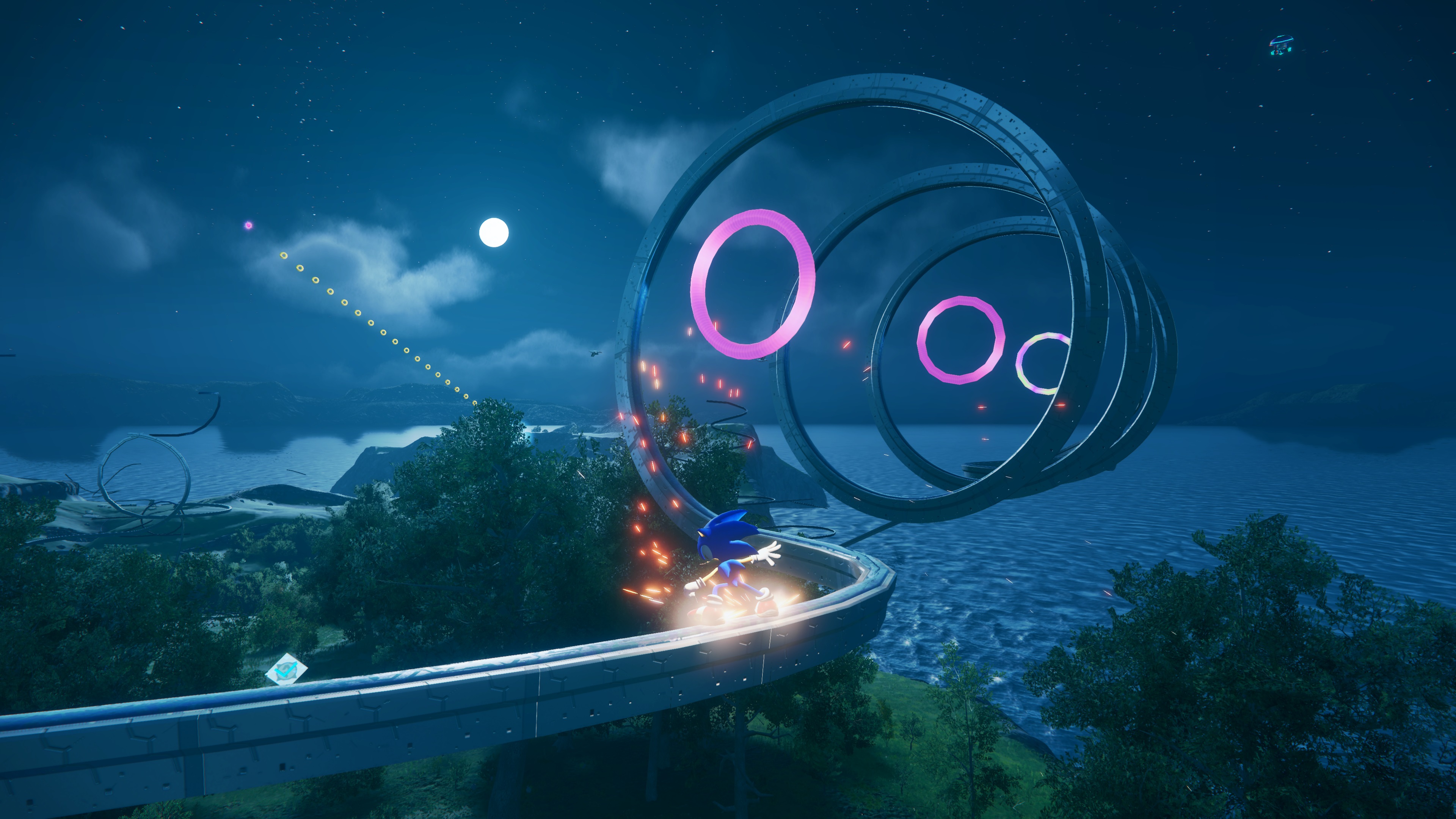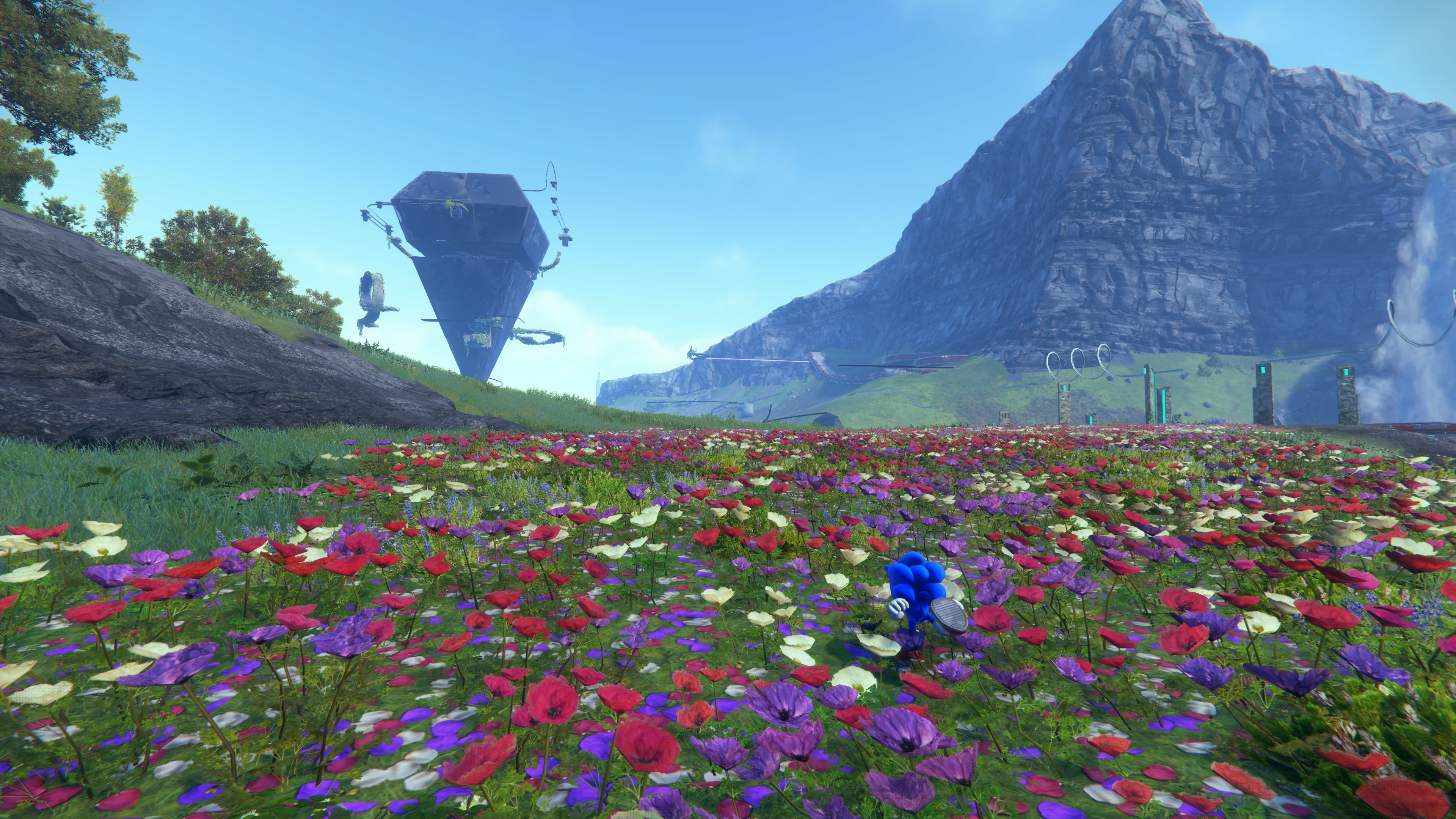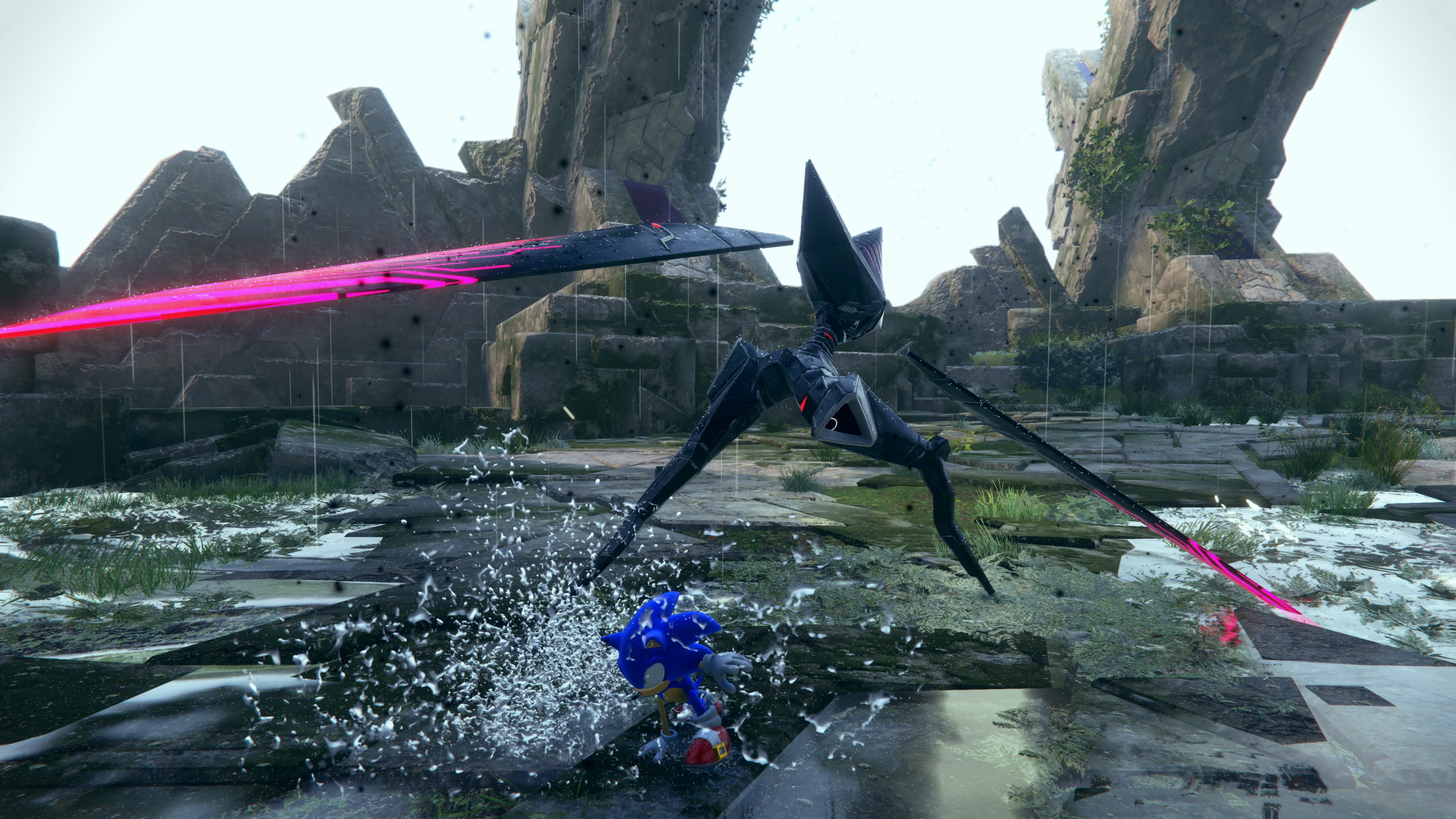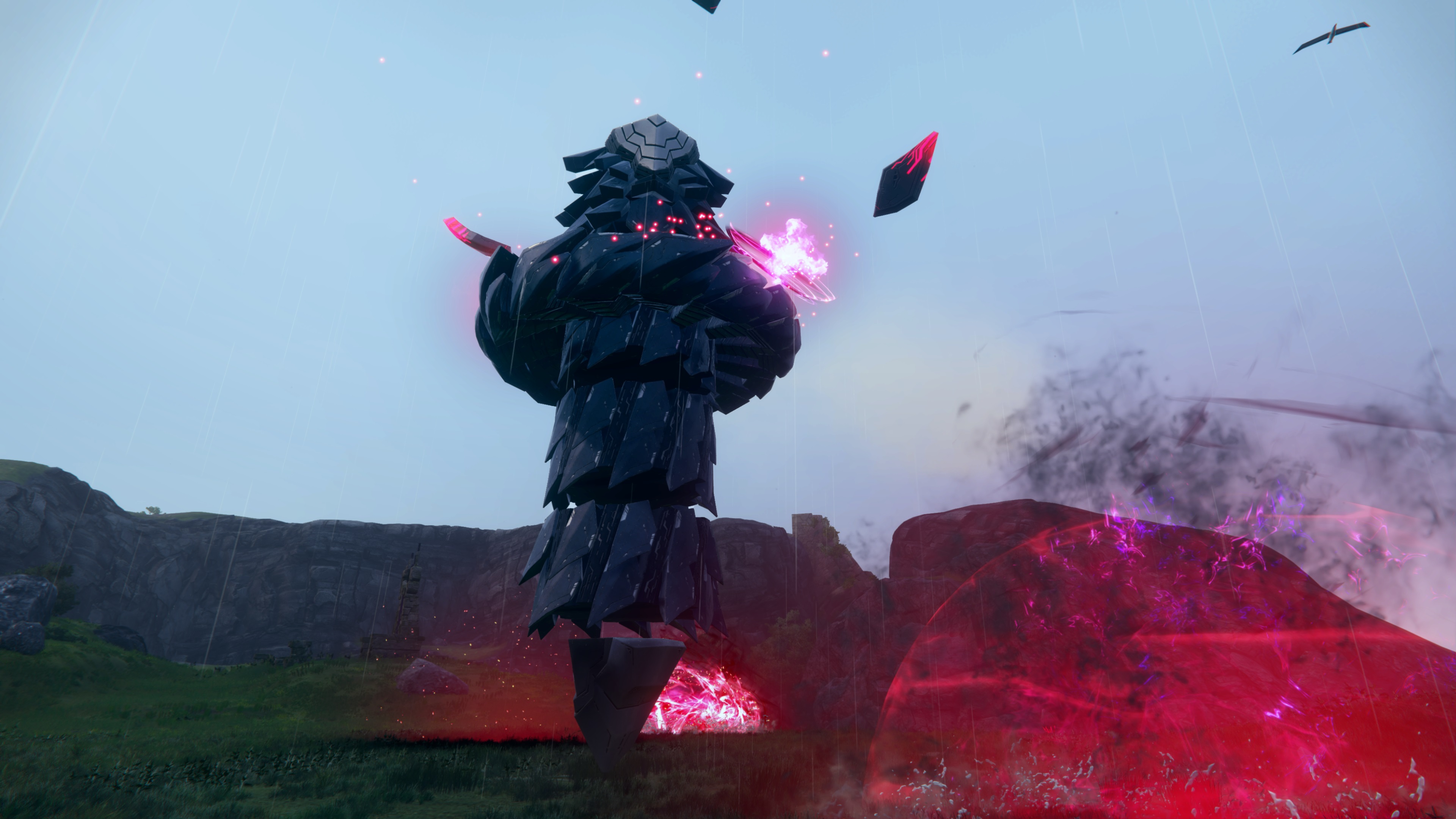I played Sonic Frontiers and it makes a staggeringly awful first impression
It is hard to find anything to like in Sonic Frontiers

Sonic Frontiers is the most stupefying game I have played in some time. I got 30 minutes with it at Summer Game Fest's Play Days event, and I spent the entire session blinking and wincing like a dog in the rain, physically recoiling in sheer bewilderment. It was not a good demo, but I don't necessarily know if Sonic Frontiers could produce a good demo.
Mechanically, visually, and narratively, Sonic Frontiers makes a staggeringly awful first impression. The fact that I've even mentioned narrative in this preview should clue you in as to what caliber of Sonic game we're dealing with here. If this first hands-on demo is anything to go by, Sonic Frontiers looks doomed to join the ranks of the franchise's worst installments.
I don't feel so good, Sonic

My Sonic Frontiers demo starts as it means to go on: low-resolution, low-frames-per-second, and plagued by pop-in. Sonic emerges from some sort of digital wormhole and crash-lands in a field of low-poly grass, his only companion a disembodied voice who we're going to call Siri. Siri assures Sonic that he's the key to everything, on account of his ability to Go Fast, and she asks him to track down the familiar Chaos Emeralds and the less familiar Titans. I still don't know what the Titans are. Understandably confused, a fully voice-acted Sonic asks Siri for a bit of context, neatly echoing my thoughts. Sadly, Siri doesn't provide any, and worse still, she cuts out before I can ask for a stick to bite down on as I realize what I've signed up for.
Let's get this out of the way: Sonic Frontiers is not pretty. The mountain environment explorable in my demo is bland, sparse, and utterly devoid of charm. It doesn't look like a Sonic game; it looks like Sonic was dropped into a canceled PUBG map. The color and flourish that I associate with the franchise is sorely absent. But Sonic still looks like Sonic, so in an environment that's seemingly chasing photorealism – but falling quite short of it – he looks comically out of place.
This visual clash is only worsened by the grind rails, boosters, platforms, and other stunt props that clumsily pepper the world, giving the game a fragmented and artificial look altogether. And let me tell you, it did not help that the demo build wouldn't let me disable or even reduce motion blur, though the tutorial assured me that the full game will. Motion blur didn't appear to improve the frame rate – or worse, it was helping and this game is an absolute slideshow without it, at least on PC, which is what the demo was running on - but it definitely made most of the screen look like it was covered in three sheets of half-melted plastic wrap.
A world too open for its own good

When Sonic Frontiers was first announced in 2021, I was tentatively excited, but also unsure if the mechanics attached to the character would be a good fit for an open-world game. One problem is that, as Siri has established, Sonic has to go fast. It's the law. But if your character can go really fast, your average open world would probably feel really small. So what do you do? Well, you could scale the world up to suit the character's movement speed by putting all the interesting bits really far apart. Of course, this runs the risk of the world feeling empty and lifeless, especially if it's unpleasant to look at, and especially if there is absolutely nothing between those interesting bits.
Sonic Frontiers briefly comes alive when I can chain flashy set-pieces together, but the small platforming challenges found around its world just feel like normal 3D Sonic levels arbitrarily broken into 20 sections with miles of ugly nothingness separating them. This makes it impossible to get into any sort of flow state. The open world feels woefully lacking in things to do or even see, and what's there is often actively worsened by the open-world structure.
Sign up to the GamesRadar+ Newsletter
Weekly digests, tales from the communities you love, and more
Combat, for example, mostly focuses on homing attacks and a basic follow-up combo, at least at first. Later on I spend some skill points – in an honest-to-god skill tree in a Sonic game – on a Cyloop move which lets me ensnare stuff with circles of light, but I really only break out the Cyloop for enemies and puzzles that clearly require it. There are more moves and upgrades to be had, but for now it's all homing attacks, all the time. Now for my money, Sonic's homing attack is most interesting when it's woven into platforming as a way to chain attacks to bridge gaps and keep your momentum. It is dramatically less interesting when forgettable android blobs pop out of the ground in the middle of nowhere just waiting to be one-hit for no clear benefit or purpose. And yet here we are.
Oh god the boss battles

Combat goes from boring to frustrating when I run into Ninja, a taller android blob and the first of three bosses I encounter in this demo. Ninja's attack hit boxes could hit both sides of a barn, so he quickly turns me into mush as I wrestle with the controls. Shortly afterward, a helpful tool tip informs me that Sonic can parry in Frontiers… sort of, but when Siri says parry, she actually means block. I mistakenly assumed that I'd need to time my parry with incoming attacks, as you do in every sensible action game under the sun, but it turns out you just need to hold the shoulder buttons – both of them, annoyingly – until you get hit and you'll automatically counter seemingly anything. Armed with this knowledge, I was able to beat Ninja despite the best efforts of a lock-on camera which routinely loses track of targets, and a dodge-roll which can't dodge anything. I couldn't help but notice that the skill tree I mentioned earlier contains an unlock for automatic combos, and I'm beginning to see why you'd want the game to fight for you.
There's a dramatic panning shot after I beat the second boss - a big-ol' black cylinder named Tower - which reveals a landscape covered in loops and ramps and collectibles, and for a moment it feels like it could work, perhaps in a universe much kinder than ours. But clunky controls, technical issues, and dull presentation swiftly bring me crashing back down to wherever the hell this is for possibly the worst boss fight yet. I say possibly because my allotted time ran out and my demo abruptly cut to black as I started scaling the thing. I didn't actually beat it, but what I saw wasn't very promising, and I'd be lying if I said I was disappointed that I didn't get the chance.

It's hard to find anything to like in Sonic Frontiers, aside from the can't-look-away appeal – for lack of a better word – of a disaster. Sonic Frontiers' characters and world mix like soy sauce and plain Cheerios. The overarching story feels worryingly comparable to the kind of drama that, in defiance of god and country, previously saw Sonic the Hedgehog kiss a real-ass human being. Platforming is functional but constantly interrupted by weaker ideas, and combat is thus far a poor imitation of any barebones action game. I don't even remember any particularly good music!
I only played an in-progress build ahead of the game's release later this year, but while there's time for improvement, from what I saw nothing short of a miracle is going to right this ship. I wouldn't consider myself a diehard Sonic fan, but I have played and enjoyed a lot of Sonic games, including the 3D bits of Sonic Generations, and I would take any of them over this.

Austin has been a game journalist for 12 years, having freelanced for the likes of PC Gamer, Eurogamer, IGN, Sports Illustrated, and more while finishing his journalism degree. He's been with GamesRadar+ since 2019. They've yet to realize his position is a cover for his career-spanning Destiny column, and he's kept the ruse going with a lot of news and the occasional feature, all while playing as many roguelikes as possible.


